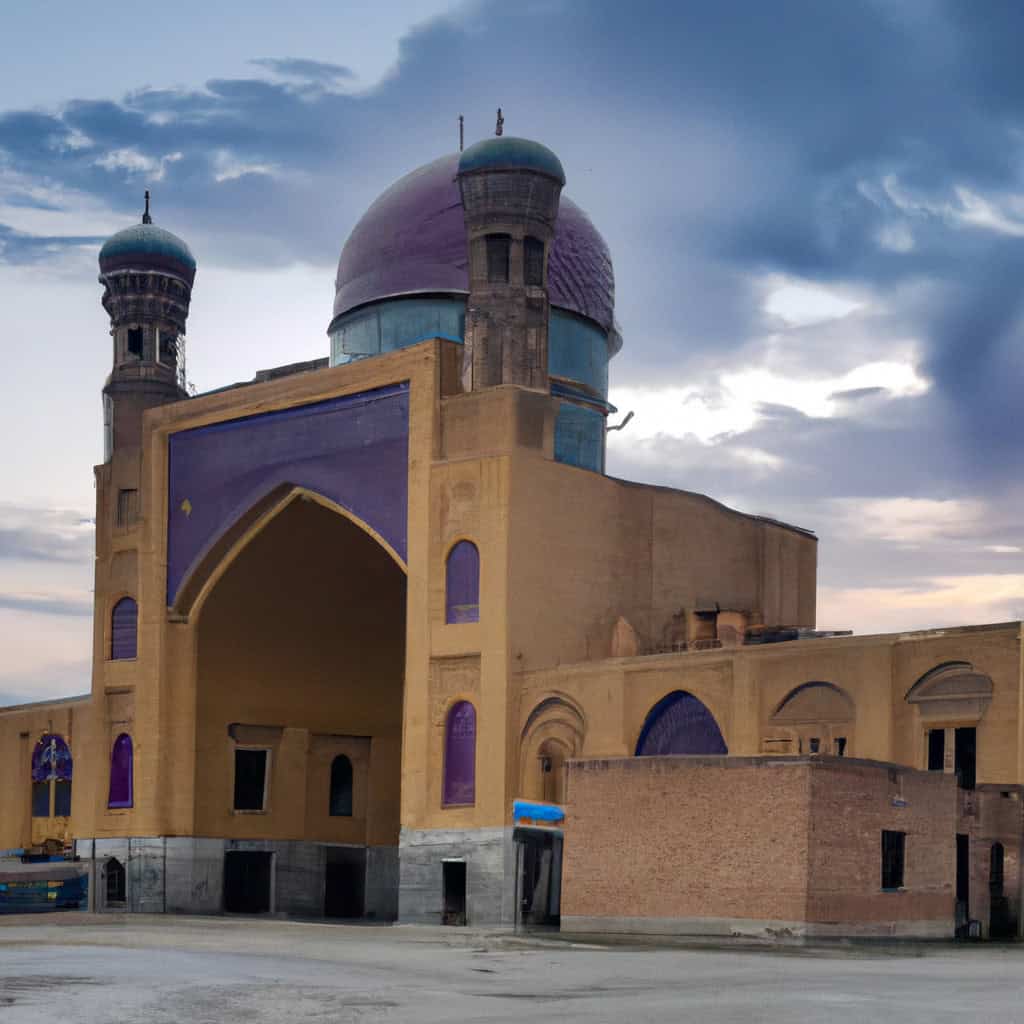Khwaja Abu Nasr Parsa Mosque in Balkh City, is one of many fascinating sites that both foreign visitors and local tourists can explore while they visit Afghanistan and exploring Balkh Province. This mosque is not just another architectural wonder, but it’s also a beautiful emblem of timeless history, capturing countless stories within its ancient walls. A symbol of immense cultural significance, Khwaja Abu Nasr Parsa Mosque is an exquisite representation of the rich Islamic legacy in Afghanistan, notable for its unique octagonal design.
Khwaja Abu Nasr Parsa Mosque Most Important Events
- The Establishment in the 15th Century: Built during the reign of the Timurid Sultan, the mosque played an integral part in promoting religious doctrines of the time.
- The Great Earthquake of 1931: The mosque withstood a destructive earthquake, resulting in significant damage but its structure remained, bearing witness to its robust architecture and the resilience of our shared history.
- UNESCO Recognition in 2006: Acknowledging its historical and architectural value, UNESCO included Khwaja Abu Nasr Parsa Mosque on the Tentative list for World Heritage status, contributing greatly to its legacy and prominence.
History of Khwaja Abu Nasr Parsa Mosque in Balkh City
The illustrious history of Khwaja Abu Nasr Parsa Mosque stretches back to the 15th century. It was built under the patronage of Khwaja Abu Nasr Parsa, a spiritual advisor to the Timurid court. Functioning not just as a place of worship but also a center for learning, the mosque was integral to the societal fabric of the time.
In 1931, history imprinted a robust mark on Khwaja Abu Nasr Parsa Mosque when a severe earthquake inflicted considerable damage to it. Residents rallied to restore it, ensuring the survival of this piece of heritage. This tragic event put the exquisite resilience of the mosque’s architecture into sharp focus, drawing international attention to its timeless beauty and historical worth.
The significance of Khwaja Abu Nasr Parsa Mosque was further underscored in 2006, when UNESCO recognized it for potential World Heritage status. This development not only elevated the mosque’s international reputation but also provided an impetus for its preservation, drawing greater tourist influx towards the mosque and the city of Balkh.
Why It’s Important to Afghan History
Khwaja Abu Nasr Parsa Mosque holds a unique position in Afghan history. As a hub of Islamic scholarly pursuits during the Timurid era, it reinforced philosophical schools of thought prevalent at the time. Its historical role as a spiritual, social, and educational center today continues to resonate with the Afghan people, representing the deep-rooted Islamic heritage of the country.
Just as the mosque’s intricate designs and octagonal structure exemplify the craftsmanship of the era, its well-thought-out restorations following the earthquake exhibit the spirit of survival and resilience in Afghan history. Placed on UNESCO’s tentative world heritage list, its importance to Afghan history and heritage is internationally recognized and appreciated.
Why to Visit Khwaja Abu Nasr Parsa Mosque
A visit to Khwaja Abu Nasr Parsa Mosque exalts the senses. Its awe-inspiring architecture, infused with Islamic art and symmetry, immediately grabs the attention. The beauty of the mosque, fortified by scenic surroundings, offers a tranquil escape into history.
The tour of the mosque unveils a marvelous spectacle of the past, revealing the country’s cultural richness on one hand and the resilience of Afghanistan on the other. Additionally, visiting at dawn or dusk allows the chance to experience an incredibly serene atmosphere of prayer and contemplation.
Noteworthy highlights include:
- The octagonal design of the mosque
- The intricate blue-tile artwork
- The peaceful courtyard for contemplation
- The fascinating account of historical resilience
- The charming local neighborhood
In terms of access, the city has a well-connected road network for convenience. Late spring and early fall are the best times to visit, to experience optimal climate and witness the mosque in its full glory.
Cultural & Tourist Significance
Khwaja Abu Nasr Parsa Mosque holds profound cultural significance for both locals and tourists. For the Afghan people, the mosque provides a shared sense of identity drawing on a rich tapestry of Islamic art, architecture, and heritage that stands tall in the landscape of Balkh.
For tourists, the mosque offers a captivating encounter with the history and architectural wonders of Afghanistan. Walking through the corridors of the mosque is like stepping back in time and coming across stories of the past, hidden within its ancient decorations and robust structure.
Moreover, it’s a unique opportunity for visitors to dive deep into the vibrant culture of the region. The mosque stands as a testament to the area’s resilience, history, and its long-standing cultural traditions that are woven into the very fabric of Afghan society.
Interesting Facts
Not many know that Khwaja Abu Nasr Parsa Mosque is considered a masterpiece of Islamic architecture for its perfect octagonal design. This design was an architectural feat during the 15th century and has been replicated in many later mosques across the world.
Among the embellishments of the mosque, the detailed blue tile artwork stands out. This traditional technique was painstakingly applied by skilled craftsmen, rendering an impressive array of geometric and floral motifs aligned with Islamic artistic symbolism.
A local legend whispers that one could hear whispers of ancient scholarly debates if you listen closely within the mosque’s chambers. Of course, it’s debatable whether this is historically accurate, but it does add a mystical aura to the already enchanted ambience of this remarkable place. Khwaja Abu Nasr Parsa Mosque, therefore, is not just a mosque, but also a living library of the past, present, and an optimistic testament to a resilient future.

